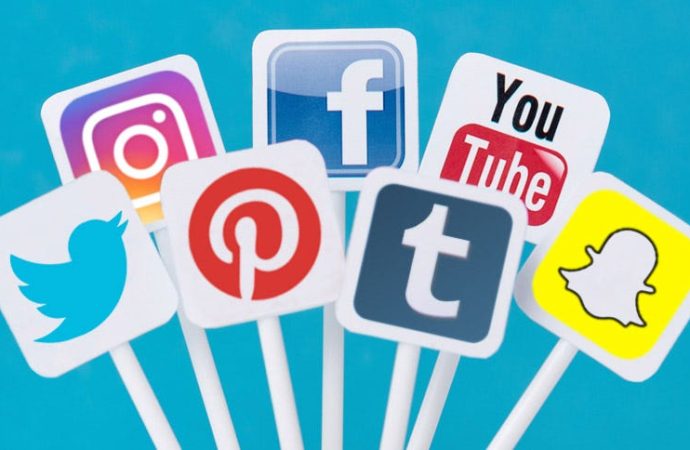Introduction Social media has become an integral part of everyday life, fundamentally altering how we communicate, consume content, and engage with the world. Over the past decade, platforms like Instagram, TikTok, Twitter, and Facebook have significantly influenced the creation and evolution of pop culture. From viral trends to the rapid rise of influencers, social media
Introduction
Social media has become an integral part of everyday life, fundamentally altering how we communicate, consume content, and engage with the world. Over the past decade, platforms like Instagram, TikTok, Twitter, and Facebook have significantly influenced the creation and evolution of pop culture. From viral trends to the rapid rise of influencers, social media has transformed the way pop culture trends emerge and spread. The speed at which information travels online has made it easier for trends to go viral overnight, affecting everything from music and fashion to politics and social issues.
This article delves into the profound impact that social media has on shaping pop culture trends, the mechanisms behind this influence, and the various ways it affects the entertainment industry, lifestyle choices, and consumer behavior.
The Rise of Social Media and Pop Culture Trends
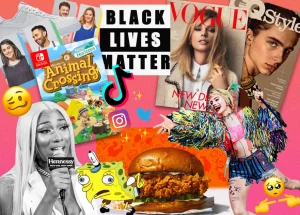
Image by: Yandex.com
Social media has grown rapidly over the years, changing the way we communicate and share information. It has become an essential part of daily life for millions of people. Platforms like Instagram, TikTok, and Twitter now play a big role in spreading pop culture trends. What used to take weeks or months to become popular can now spread worldwide in a matter of hours, thanks to social media. This shift has made social media a powerful tool for creating and promoting new trends.
Benefits of Social Media in Shaping Pop Culture
Social media offers many advantages when it comes to shaping pop culture. It gives people the chance to connect with others from all over the world. This makes it easier for new ideas, music, fashion, and even social movements to spread quickly. Social media also allows anyone to be part of the conversation. Whether you’re a celebrity or a regular person, your voice can be heard and can influence trends. The speed and reach of social media mean that pop culture is more dynamic and accessible than ever before.
The Role of Social Media in Pop Culture
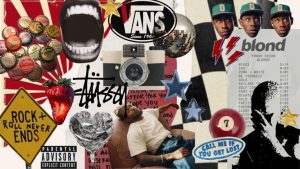
Image by: Yandex.com
Social media plays a huge role in creating and spreading pop culture. It allows trends to be born from everyday users, not just celebrities or professionals. For example, viral challenges, memes, and dance moves often start from regular people and are shared widely across social media. Celebrities also use their platforms to influence trends by sharing new songs, fashion, or ideas. This direct connection between the creators and their audience has made social media a major force in shaping what’s popular.
How Social Media Drives Pop Culture
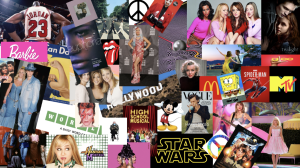
Image by: Yandex.com
Social media plays a pivotal role in the spread and creation of pop culture trends. Unlike traditional media, which is often controlled by a few entities, social media democratizes content creation, allowing anyone to share their ideas with a global audience. The speed of sharing and the viral nature of content have enabled social media platforms to become trend incubators, where millions of people can interact with and influence the direction of culture in real time.
Platforms like TikTok, Instagram, and Twitter act as launchpads for new trends, memes, challenges, and viral moments. These platforms allow users to participate in shaping trends, making pop culture a more collaborative and dynamic process. Here are some key ways social media drives pop culture:
- Viral Challenges and Memes: Social media is known for launching viral challenges, dance routines, and memes that capture the public’s attention. Trends like the “Ice Bucket Challenge” or the “Renegade Dance” became global phenomena thanks to their widespread social media engagement.
- Celebrity Influence: Celebrities use their massive social media followings to promote trends, fashion, music, and products. The influence of stars like Beyoncé, Taylor Swift, and Kim Kardashian is magnified by social media, with their posts often sparking global trends and discussions.
- Real-time Content Sharing: Social media platforms allow for instant sharing, making it possible for news, fashion trends, and memes to reach a global audience within seconds. This immediacy has made pop culture more fast-paced and fluid than ever before.
The Role of Influencers in Shaping Pop Culture
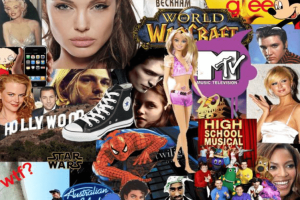
Image by: Yandex.com
Influencers have become powerful figures in the world of pop culture. These individuals, who have gained massive followings on platforms like Instagram, YouTube, and TikTok, have the ability to sway public opinion, promote trends, and even launch new products. Influencers, from beauty gurus to fitness experts, often serve as trendsetters, dictating what’s “cool” and “in” for their followers.
Influencers’ impact on pop culture is particularly noticeable in areas such as fashion, beauty, and lifestyle. For example, when a popular influencer promotes a particular fashion brand or beauty product, it can spark a wave of interest, driving consumers to purchase and replicate the looks they see on their favorite influencers’ feeds.
Social Media and Music Trends

Image by: Yandex.com
One of the most notable influences of social media on pop culture is in the music industry. Platforms like TikTok have completely transformed the way new music is discovered and shared. The ability for a song to go viral on TikTok through dance challenges or lip-sync videos has led to a dramatic shift in how music trends emerge. Artists no longer need traditional radio airplay or a record label’s backing to make a song popular. A viral moment on social media can propel an unknown song to the top of the charts.
Songs like “Old Town Road” by Lil Nas X, “Savage Love” by Jawsh 685 and Jason Derulo, and “Blinding Lights” by The Weeknd gained immense popularity after being featured in viral TikTok videos. The platform has changed how music is consumed and popularized, creating a new model for artists to follow.
Social Media and Fashion Trends
Social media’s influence on fashion is undeniable. With Instagram being a visual-centric platform, it has become a digital runway for fashion trends to emerge and spread rapidly. Influencers, celebrities, and fashion designers use social media to showcase their latest collections, creating a direct link between fashion trends and online communities.
Hashtags like #OOTD (Outfit of the Day) and #FashionInspo allow people to share their personal style and draw inspiration from others. Additionally, Instagram’s “Stories” and “Reels” features provide a space for more interactive and ephemeral content, allowing trends to come and go with speed.
Social media has also democratized fashion, allowing people to follow a wide variety of influencers, including those from different cultures, body types, and personal styles. This has led to a more inclusive and diverse representation of fashion in pop culture.
The Impact of Social Media on Political and Social Trends
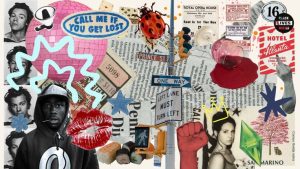
Image by: Yandex.com
Social media doesn’t just affect fashion, music, and entertainment—it has also transformed political and social trends. Platforms like Twitter have become battlegrounds for political debates, while Facebook and Instagram have been used to rally support for various social movements. The #MeToo movement, Black Lives Matter, and climate change activism all gained significant traction through social media.
In many ways, social media acts as a megaphone for social change, allowing marginalized voices to be heard and inspiring collective action. The viral spread of social movements through social media has made it easier for people to organize, protest, and raise awareness on issues that might otherwise be ignored.
Challenges of Social Media’s Impact on Pop Culture
Despite its many benefits, social media also comes with challenges. One of the biggest issues is the speed at which trends can spread, sometimes leading to misinformation or negative content. Not all trends are positive, and some can cause harm or confusion. Another challenge is the pressure social media puts on influencers and regular users to constantly create content. This can lead to burnout or unhealthy comparisons. The rapid pace of change also means that trends come and go quickly, which can make it hard for something to last.
The Future of Social Media and Pop Culture
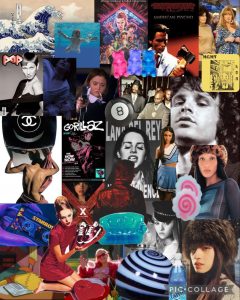
Image by: Yandex.com
The future of social media and its role in pop culture looks exciting. As new platforms and technologies develop, we can expect even more ways for people to interact with and shape trends. Virtual reality, AI, and other innovations may further change how we experience pop culture. Social media will likely continue to grow, with new generations of users driving fresh trends and ideas. While there will be challenges, the opportunities for creativity and connection will make social media an important part of pop culture for years to come.
Analysis of Social Media’s Impact on Pop Culture Trends
| Aspect | Traditional Media | Social Media |
|---|---|---|
| Speed of Trend Emergence | Slow, controlled by major networks and agencies | Rapid, driven by viral content and user interaction |
| Audience Engagement | Passive consumption (viewers, readers) | Active participation (likes, shares, comments, reposts) |
| Content Creation | Limited to professionals (editors, directors) | Open to everyone (user-generated content, influencers) |
| Trend Lifespan | Longer-lasting, cyclical trends | Shorter-lived, fast-moving trends with quick adoption |
| Global Reach | Restricted by geographical and broadcast limitations | Global reach with no barriers, instant worldwide spread |
Comparative Table: Social Media vs. Traditional Media in Pop Culture
| Feature | Social Media | Traditional Media |
|---|---|---|
| Content Creation | User-driven, influencer-based | Professional, company-controlled |
| Virality | Trends spread quickly due to shares and hashtags | Slow, dependent on TV/radio exposure |
| Interactivity | High engagement through comments, likes, and shares | Limited interaction (viewing only) |
| Influencers | Celebrities, influencers, everyday users | Celebrities, actors, traditional spokespeople |
| Trend Lifespan | Short, trends evolve quickly | Long, cyclical nature of trends |
Conclusion: The Future of Social Media’s Influence on Pop Culture
As social media continues to evolve, its influence on pop culture will only grow stronger. Platforms will continue to serve as incubators for new trends and movements, while influencers will play an increasingly prominent role in shaping public opinion and lifestyle choices. The way we interact with culture, fashion, music, and social issues is being redefined by social media, and it’s clear that the lines between content consumers and content creators are becoming ever more blurred.
Social media has made pop culture more accessible, dynamic, and diverse, allowing anyone with a smartphone and an internet connection to impact the world. The future of pop culture trends will be shaped by the ongoing interaction between social media platforms and the global audience, making pop culture more inclusive, fast-paced, and interactive than ever before.

